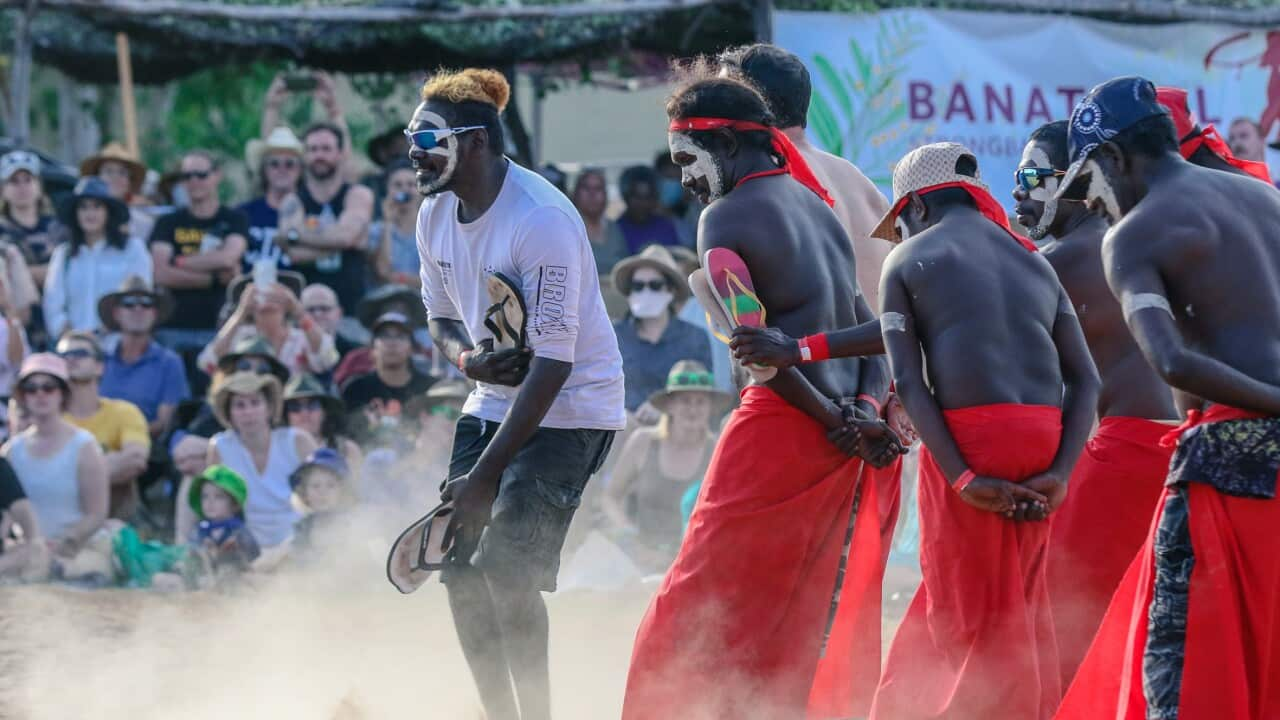This story contains the names of Aboriginal people who have passed.
Over 200 delegates from four Nothern Territory land councils have pledged their support to the Indigenous Voice to Parliament at the Barunga Festival.
The representatives marked their names on the edges of prints of the famous Barunga Statement at the festival in Barunga, 80 kilometres southeast of Katherine.
The Barunga Statement, which is celebrating its 35th anniversary this year, is one of the most significant documents in the journey toward the treaty.
Back to 1988
At the renowned Barunga Sport and Cultural Festival, on June 12, nine Aboriginal people gathered to paint and share.
What culminated was the Barunga Statement.
Painted on board with natural pigments, the statement was presented to former prime minister Bob Hawke by co-creators Galarrwuy Yunupingu and Wenten Rubuntja at the festival.
In response, Mr Hawke agreed to develop a treaty by 1990.
On December 20, 1991, the Statement was welcomed to Parliament House.
The ceremony was one of Mr Hawke’s last acts as prime minister, with Paul Keating taking power the previous day.

The Barunga Statement painted in 1988. Source: Supplied
What's in the statement?
The document was the culmination of years of negotiation between Aboriginal community groups in the Northern Territory with the Australian Government - facilitated by the Northern and Central Land Councils.
Created on behalf of the “Indigenous owners and occupiers of Australia”, it called on the Australian Government to:
- recognise sovereign rights to self-determination and self-management
- employ permanent control and enjoyment of ancestral Country
- compensate for loss of land
- acknowledge rights to protect and control sacred sites.
- the return of ancestral remains and their cultural burial
- respect of Aboriginal identity, in accordance with many international obligations.
The statement asked for legislation that would see a national elected Aboriginal and Torres Strait Islander organisation to oversee human rights, a national system of land rights, and police and justice systems that acknowledged customary laws.
In its final paragraph, the statement called for the Commonwealth Parliament to negotiate a treaty with Indigenous Peoples – that recognised “prior ownership, continued occupation and sovereignty”.
A treaty that would affirm “our human rights and freedom”.
The painting around the words was created to represent the people who came together to create it.
The left of the Statement was painted by Yolngu men from Northern Australia to represent Saltwater Country.
The three panels showcase Dreaming stories from different parts of northeast Arnhem Land, from Blue Mud Bay, Caledon Bay and Trial Bay.
The right of the statement was painted by Arrernte and Warlpiri men from Central Australia and shares the Two Women Dreaming story.
The song of Barunga
In 1991, the first Aboriginal band hit the ARIA single charts with the first song that showcased Aboriginal language.
Treaty by Yothu Yindi was created in response to the Hawke Government being unable to develop a treaty by 1990 and hoped to encourage the Government to honour its commitment.
Yothu Yindi band members Mandawuy Yunupingu, Stuart Kellaway, Cal Williams, Gurrumul Yunupingu, Milkayngu Mununggurr and Witiyana Marika, created the song with Midnight Oil’s Peter Garrett and rock icon Paul Kelly.

Yothu Yindi perform with special guests at the 26th ARIA Awards. Source: AAP
The journey continues
Despite Mr Hawke's pledge, the promise of treaty remains unfulfilled.
At the 2018 Barunga Festival, three decades since the presentation of the Statement, four NT Aboriginal Land Councils came together to recommit to the goals of the document – signing the Barunga Agreement.
The Agreement outlined a Memorandum of Understanding between Traditional Owners from the land councils to work towards a treaty in the NT.
Today, the Barunga Statement remains on a wall in Parliament House.














